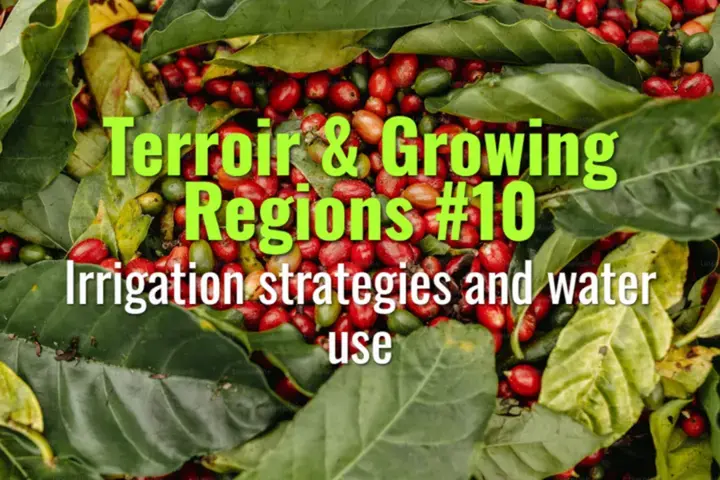Irrigation strategies and water use
This topic explores the different irrigation methods used in coffee farming, their advantages and challenges, and the importance of water conservation for long-term sustainability.
- Coffee Basics Nerds
- 2 min read
Article 10 of 12 in Terroir & Growing Regions/

Rainfed vs Irrigated Coffee
- Rainfed systems: Most coffee globally is grown without irrigation, relying on seasonal rainfall.
- Advantage: Lower cost, traditional method.
- Challenge: Increasingly unreliable due to climate variability.
- Irrigated systems: Provide water during dry spells or at critical growth stages.
- Advantage: Stabilizes yield and quality.
- Challenge: Expensive infrastructure, potential for overuse of water resources.
Irrigation Strategies
1. Drip Irrigation
- Description: Delivers water directly to the root zone through tubes and emitters.
- Advantages: Highly efficient, reduces evaporation losses, conserves water.
- Best use: Drought-prone areas, high-value specialty farms.
2. Sprinkler Irrigation
- Description: Sprays water over plants, simulating rainfall.
- Advantages: Covers large areas quickly.
- Disadvantages: High evaporation, risk of leaf disease, less efficient.
3. Furrow / Surface Irrigation
- Description: Channels guide water through rows of plants.
- Advantages: Low-cost, easy to set up.
- Disadvantages: High water loss, erosion risk, uneven distribution.
4. Rainwater Harvesting
- Description: Collecting and storing rainwater for later use.
- Advantages: Sustainable, low-cost supplemental irrigation.
- Methods: Storage tanks, ponds, and terracing to capture runoff.
5. Critical-Stage Irrigation
- Focus on providing water at key stages:
- Flowering: Ensures uniform bloom.
- Fruit set: Prevents cherry abortion.
- Bean filling: Improves size and density.
Water Use Challenges
- Over-extraction: Can deplete aquifers and rivers, harming ecosystems.
- Inefficiency: Traditional methods waste water through runoff and evaporation.
- Climate change: Longer droughts increase demand for irrigation while reducing supply.
Conservation Practices
- Mulching: Retains soil moisture, reduces evaporation.
- Shade trees: Lower soil temperature and water demand.
- Soil management: Organic matter improves water retention.
- Smart irrigation: Sensors and scheduling optimize water use.
Lasting Importance
Efficient irrigation strategies balance yield stability with environmental responsibility. As rainfall becomes less predictable, water management will be crucial for ensuring the sustainability of coffee production without depleting vital natural resources.